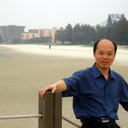Angelica sinensis and its alkylphthalides induce the detoxification enzyme NAD(P)H: quinone oxidoreductase 1 by alkylating Keap1.
Kľúčové slová
Abstrakt
The roots of Angelica sinensis (Oliv.) Diels (Dang Gui; Apiaceae) have a long history in traditional Chinese medicine as a remedy for women's disorders and are often called "lady's ginseng". Currently, extracts of A. sinensis are commonly included in numerous dietary supplements used for women's health and as antiaging products. In the present study, we examined the potential chemopreventive activity of A. sinensis extracts by measuring the relative ability to induce the detoxification enzyme, NAD(P)H:quinone oxidoreductase 1 (NQO1). The lipophilic partitions showed strong NQO1 induction with concentrations to double the enzyme activity (CD) of 5.5 +/- 0.7 (petroleum ether) and 3.9 +/- 0.5 microg/mL (chloroform). Fractionation led to the isolation of phenolic esters and alkylphthalides, especially Z-ligustilide, the main lipophilic compound, which showed strong NQO1 inducing properties (CD = 6.9 +/- 1.9 microM). Transcription of many detoxifying enzymes is regulated through the antioxidant response element (ARE) and its transcription factor Nrf2, which is repressed under basal conditions by Keap1. However, exposure to electrophilic inducers that alkylate Keap1 results in higher concentrations of free Nrf2 and ARE activation. The ARE reporter activity was therefore analyzed in HepG2-ARE-C8 cells after incubation with lipophilic extracts of A. sinensis or ligustilide for 24 h. Under these conditions, both the extract and the ligustilide increased ARE-luciferase reporter activity in a dose-dependent manner. Incubation of ligustilide with GSH and subsequent LC-MS-MS analysis revealed that ligustilide as well as oxidized ligustilide species covalently modified GSH. In addition, using MALDI-TOF mass spectrometry and LC-MS-MS, it was demonstrated that the lipophilic extracts, ligustilide, and monooxygenated ligustilide alkylated important cysteine residues in human Keap1 protein, thus activating Nrf2 and transcription of ARE regulated genes. These observations suggest that A. sinensis dietary supplements standardized to ligustilide have potential as chemopreventive agents through induction of detoxification enzymes.


